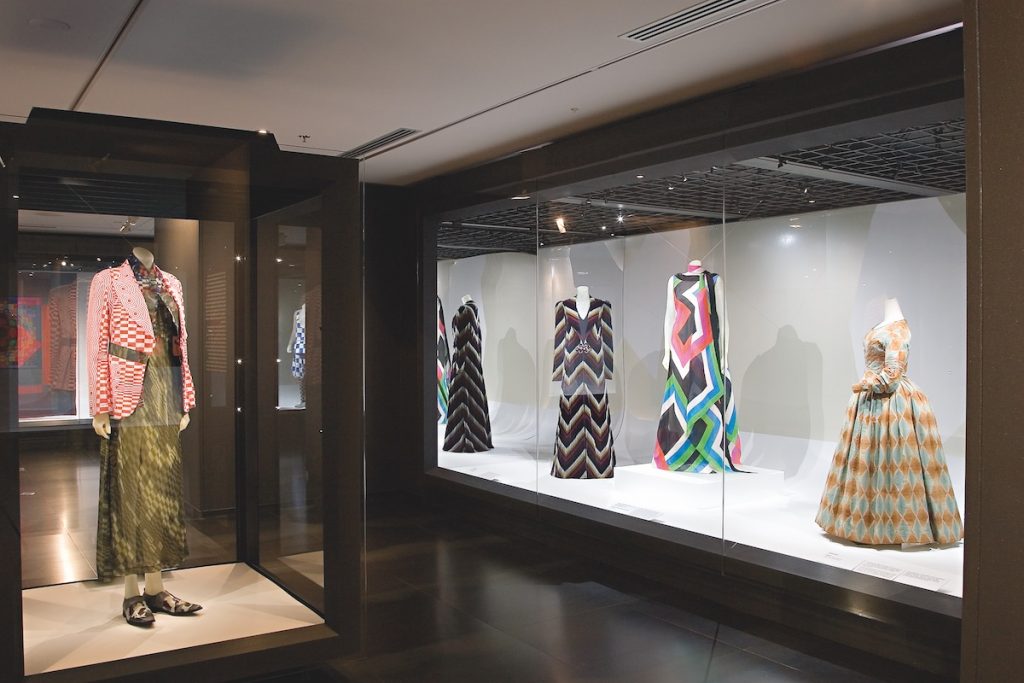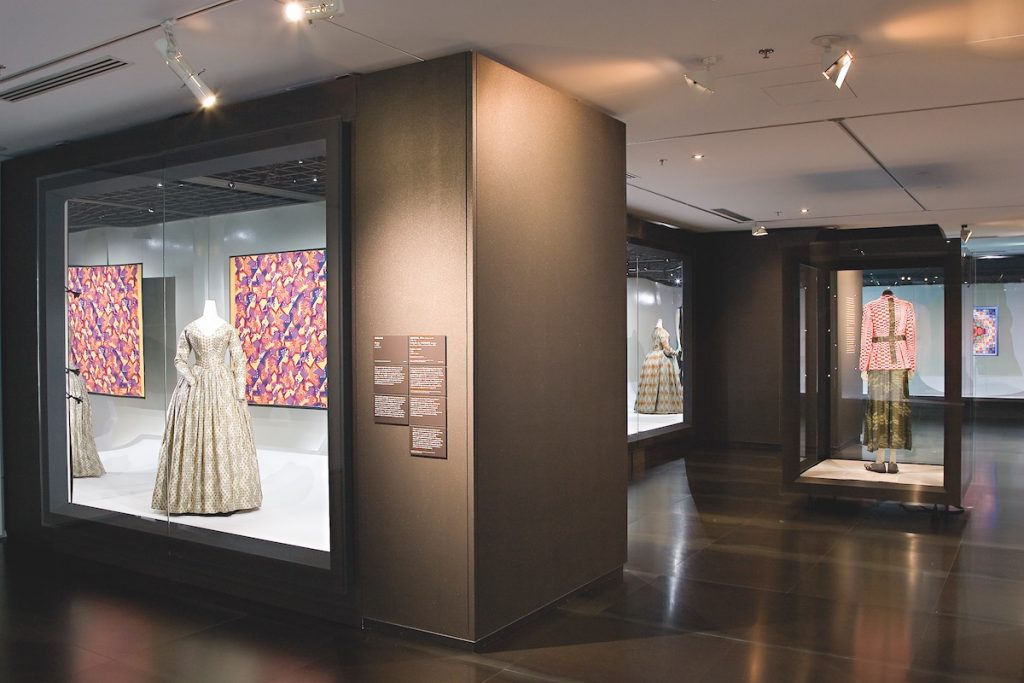Abstract Mode: GeoMETric Fashion and Textiles
Abstract Mode presents geometric patterns and forms in women’s and men’s fashion and textiles from the nineteenth century to the present. Works range from the delicate patterns of mid-to-late nineteenth-century women’s dress to the futuristic 1960s style of Pierre Cardin and the energetic sampling of contemporary fashion. This is the second exhibition at the National Gallery of Victoria to reflect on styles of embellishment in Western fashion and textiles. In 2005, Everlasting surveyed the history of floral themes and motifs. Representations of the flower have their origins in nature whereas geometric patterns evolve from abstract forms, such as circles, squares and triangles, which correspond to mathematical equations. Beyond the abstract surface of many geometric designs lies a rich history of symbolism. For instance, the carefully balanced harmonies of the Diamond square in the square quilt c.1925 are intended as a metaphor for the Amish belief that work and daily life, art and spirit cannot be separated.
Abstract Mode begins with the wasp-waisted and full-skirted gowns of the mid-to-late nineteenth century that use fabrics printed with surprisingly abstract designs such as diamonds, spots and stylized motifs. Patchwork was another great enthusiasm of the nineteenth century, a practice that lent itself to geometric division as seen in the ‘tumbling blocks’ design of Doll’s dress c.1865. Bold colour combinations in chevron patterns were a feature of the Art Deco period as seen in a vividly striped evening coat from the early 1930s. The 1960s favoured a sharp and graphic sensibility, epitomised by the Op art illusions of a scarf designed by the artist Victor Vasarely and the Mondrian dress 1965 by Yves Saint Laurent. Saint Laurent’s dress skilfully reproduces the perpendicular lines of Piet Mondrian’s abstract paintings. In the 1990s Issey Miyake revolutionised the use of pleating to produce clothes based on primary shapes such as the Flying saucer dress 1994. The resurgence of striking pattern in the twenty-first century is reflected in works by contemporary designers such as Rei Kawakubo for her label Comme des Garçons, John Galliano for Christian Dior and Bernhard Willhelm.
Photo courtesy of National Gallery of Victoria, Melbourne

